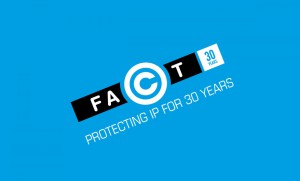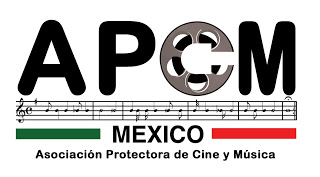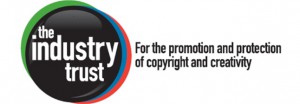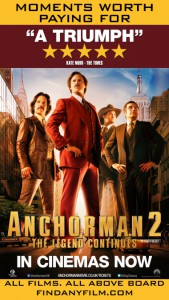The Rise of Big Copyright: Content Protection and the Formation of Anti-Piracy Alliances
Post by Paul McDonald, King’s College London
This post continues the ongoing “From Nottingham and Beyond” series, with contributions from faculty and alumni of the University of Nottingham’s Department of Culture, Film and Media. This week’s contributor, Paul McDonald, was Professor of Cinema and Media Industries in our department from 2011-2015.
 A few weeks ago, the Get It Right from a Genuine Site anti-piracy campaign was launched in the UK. The campaign was run by Creative Content UK, a body formed the previous year to “boost consumer awareness of the wide array of legitimate online content services and help reduce online copyright infringement.” CCUK’s founding partners were the BPI (British Phonographic Industry), Hollywood’s trade body for international territories the Motion Picture Association (MPA), and the four main internet service providers in the UK: BT, Sky Broadband, TalkTalk and Virgin Media. Additional support for CCUK came from broadcasters (BBC and ITV), actors’ union Equity, the Film Distributors’ Association, the Independent Film and Television Alliance, the Musicians’ Union, Pact, the Premier League, the Publishers Association and UK Music.
A few weeks ago, the Get It Right from a Genuine Site anti-piracy campaign was launched in the UK. The campaign was run by Creative Content UK, a body formed the previous year to “boost consumer awareness of the wide array of legitimate online content services and help reduce online copyright infringement.” CCUK’s founding partners were the BPI (British Phonographic Industry), Hollywood’s trade body for international territories the Motion Picture Association (MPA), and the four main internet service providers in the UK: BT, Sky Broadband, TalkTalk and Virgin Media. Additional support for CCUK came from broadcasters (BBC and ITV), actors’ union Equity, the Film Distributors’ Association, the Independent Film and Television Alliance, the Musicians’ Union, Pact, the Premier League, the Publishers Association and UK Music.
CCUK is the newest arrival to the UK’s anti-piracy business and as such is representative of a trend now characterizing the modern media industries—the formation of inter- and intra-industry alliances to combat media piracy and protect copyrighted content. Over recent years, claims of escalating piracy have seemingly been accompanied by a concurrent escalation in the number of coalitions formed to combat it. Although not a new development, the formation of anti-piracy alliances has intensified over the last ten to fifteen years. As a way of grasping the implications of this trend, these developments might be described as the rise of Big Copyright, the emergence of new constellations of commercial-legal power in the media economy.
There are several reasons why this trend cannot simply be seen as a continuation of the oligopolistic tendencies of so-called Big Media by means of intellectual property. First, as a label for a concentrated cluster of private firms, Big Media has no formal collective identity other than perhaps memberships of trade associations for the film or music businesses. Big Copyright, on the other hand, materializes in a multitude of specific, named alliances that are the products of formalized agreements to collaborate. Second, Big Copyright brings together interests that spread far beyond the diversified holdings of even the largest, most diversified media and communication conglomerates. Big Media are part of Big Copyright, but the latter extends further, formed of unities among multiple copyright holders from across the business software, publishing, music, film, television and game industries, plus broadcasters, internet service providers, media retailers, marketing agencies, technology firms and in some cases police forces. These alliances have become power brokers in what Adrian Johns describes as the “intellectual property defence industry,” creating constellations of interests to aggregate social and political capital against piracy. While these groupings are led by the media industries, the raison d’être behind the creation of these alliances is to reach beyond the media sector by pressuring governments to act in the interests of rights holders, working with judicial and police authorities to enforce the protection of rights, and reaching out to the public by communicating lessons in good copyright citizenship. Finally, while Big Media largely means the major U.S. media firms, with the possible addition of Bertelsmann, Big Copyright is more internationally dispersed, comprising alliances formed around various national coalitions and including a few transnational members.
 By way of illustration, I’ll briefly review here the alliances at the forefront of the content protection business in the UK. Formed in October 1982 through collaboration between the Motion Picture Export Association of America (MPEAA), the Society of Film Distributors, and the British Videogram Association (BVA), the Federation Against Copyright Theft (FACT) was established in the early years of the home-video boom, when Britain was regarded by Hollywood as a hotbed of video piracy due to the low fines imposed for first offenses and lenient sentences for subsequent convictions. FACT is part of the MPA’s international network of national non-profit “content protection organizations” (CPOs), which now extends to over 30 countries, predominantly in Western Europe but also in parts of Eastern Europe, the Asia-Pacific region, and North and South America. Through this network, FACT has equivalents in other major international markets for Hollywood film and television, including JIMCA (the Japan and International Motion Picture Copyright Association), Germany’s Gesellschaft zur Verfolgung von Urheberrechtsverletzungen (GVU, the Society for the Prosecution of Copyright Infringement), France’s Association de Lutte Contre la Piraterie Audiovisuelle (ALPA, the Association for the Fight Against Audiovisual Piracy) and the Asociación Protectora de Cine y Música México (APCM, the Mexican Association for the Protection of Movies and Music).
By way of illustration, I’ll briefly review here the alliances at the forefront of the content protection business in the UK. Formed in October 1982 through collaboration between the Motion Picture Export Association of America (MPEAA), the Society of Film Distributors, and the British Videogram Association (BVA), the Federation Against Copyright Theft (FACT) was established in the early years of the home-video boom, when Britain was regarded by Hollywood as a hotbed of video piracy due to the low fines imposed for first offenses and lenient sentences for subsequent convictions. FACT is part of the MPA’s international network of national non-profit “content protection organizations” (CPOs), which now extends to over 30 countries, predominantly in Western Europe but also in parts of Eastern Europe, the Asia-Pacific region, and North and South America. Through this network, FACT has equivalents in other major international markets for Hollywood film and television, including JIMCA (the Japan and International Motion Picture Copyright Association), Germany’s Gesellschaft zur Verfolgung von Urheberrechtsverletzungen (GVU, the Society for the Prosecution of Copyright Infringement), France’s Association de Lutte Contre la Piraterie Audiovisuelle (ALPA, the Association for the Fight Against Audiovisual Piracy) and the Asociación Protectora de Cine y Música México (APCM, the Mexican Association for the Protection of Movies and Music).  CPOs localize the MPA’s global fight against piracy, providing on-the-ground points of contact for links with national governmental departments, law-enforcement agencies, and companies or trade bodies in the media sector. Although operating as a kind of outpost in Hollywood’s global fight against film and television piracy, FACT is now networked into the broader UK media economy. Alongside the MPA and the six major Hollywood corporations, FACT’s membership includes the main terrestrial broadcasters (BBC, ITV), satcaster (Sky) and cable provider (Virgin Media), plus film trade bodies (British Video Association, Film Distributors’ Association, and UK Cinema Association), and a leading sports rights holder (Premier League). As an industry body, FACT holds no statutory authority but instead functions primarily to aid anti-piracy efforts by collaborating with national law-enforcement and customs officials to investigate and prosecute alleged infringing activities. FACT operates partnerships with HM Revenue and Customs, Border Force, the National Crime Agency, Trading Standards offices, and fifteen regional police forces.
CPOs localize the MPA’s global fight against piracy, providing on-the-ground points of contact for links with national governmental departments, law-enforcement agencies, and companies or trade bodies in the media sector. Although operating as a kind of outpost in Hollywood’s global fight against film and television piracy, FACT is now networked into the broader UK media economy. Alongside the MPA and the six major Hollywood corporations, FACT’s membership includes the main terrestrial broadcasters (BBC, ITV), satcaster (Sky) and cable provider (Virgin Media), plus film trade bodies (British Video Association, Film Distributors’ Association, and UK Cinema Association), and a leading sports rights holder (Premier League). As an industry body, FACT holds no statutory authority but instead functions primarily to aid anti-piracy efforts by collaborating with national law-enforcement and customs officials to investigate and prosecute alleged infringing activities. FACT operates partnerships with HM Revenue and Customs, Border Force, the National Crime Agency, Trading Standards offices, and fifteen regional police forces.
 FACT therefore represents a point of mediation between the MPA CPOs and various national companies, bodies and agencies. For over three decades, FACT has remained at the forefront of anti-piracy efforts in the UK, but since the late 1990s, this network organization has seen developments with the formation of various new alliances. Operating as a kind of über-association, the Alliance for Intellectual Property exists to provide a single voice representing the collective interests of the copyright industries to the UK government. Formed in 1998, the Alliance aggregates the interests of two dozen “trade organisations, enforcement organisations and collecting societies from across the creative, branded and design industries.” Beyond its own business, the Alliance pays communications consultancy Luther Pendragon to provide administrative support to the All Party Parliamentary Intellectual Property Group (APPG), launched in 2003 as an interest group within UK government that, according to the Register of All-Party Parliamentary Groups, serves to “debate and highlight the value of intellectual property (IP) and the importance of its promotion and protection.”
FACT therefore represents a point of mediation between the MPA CPOs and various national companies, bodies and agencies. For over three decades, FACT has remained at the forefront of anti-piracy efforts in the UK, but since the late 1990s, this network organization has seen developments with the formation of various new alliances. Operating as a kind of über-association, the Alliance for Intellectual Property exists to provide a single voice representing the collective interests of the copyright industries to the UK government. Formed in 1998, the Alliance aggregates the interests of two dozen “trade organisations, enforcement organisations and collecting societies from across the creative, branded and design industries.” Beyond its own business, the Alliance pays communications consultancy Luther Pendragon to provide administrative support to the All Party Parliamentary Intellectual Property Group (APPG), launched in 2003 as an interest group within UK government that, according to the Register of All-Party Parliamentary Groups, serves to “debate and highlight the value of intellectual property (IP) and the importance of its promotion and protection.”
 Operating since 2004 with support from the UK film, TV and video industries, the Industry Trust for Intellectual Property Awareness describes itself as a “pro-copyright consumer education body.” Membership of the Trust extends to 44 entities, including all the major film/video distributors and cinema chains and their related trade bodies, plus marketing agencies (My Movies, Think Jam), pre-school entertainment company HIT, optical-disc manufacturer Sony DADC, digital-entertainment technology provider Rovi, home-entertainment metadata supplier West10, and leading online retailers (e.g. Amazon, eBay) and supermarkets (e.g. Asda, Sainsbury’s and Tesco). In addition, the Trust has 88 partners from across the UK’s film and television business, including FACT and the Alliance for IP. To promote awareness of the value of IP, the Industry Trust has run multiple campaigns, including the series of Moments Worth Paying For ads screened across cinemas, digital outdoor spaces and online media.
Operating since 2004 with support from the UK film, TV and video industries, the Industry Trust for Intellectual Property Awareness describes itself as a “pro-copyright consumer education body.” Membership of the Trust extends to 44 entities, including all the major film/video distributors and cinema chains and their related trade bodies, plus marketing agencies (My Movies, Think Jam), pre-school entertainment company HIT, optical-disc manufacturer Sony DADC, digital-entertainment technology provider Rovi, home-entertainment metadata supplier West10, and leading online retailers (e.g. Amazon, eBay) and supermarkets (e.g. Asda, Sainsbury’s and Tesco). In addition, the Trust has 88 partners from across the UK’s film and television business, including FACT and the Alliance for IP. To promote awareness of the value of IP, the Industry Trust has run multiple campaigns, including the series of Moments Worth Paying For ads screened across cinemas, digital outdoor spaces and online media.
Following the model of the Center for Copyright Information in the US, CCUK was launched with two purposes. Get It Right from a Genuine Site is the first outcome of CCUK’s commitment to pro-copyright public awareness campaigning.
CCUK was also established to implement the Voluntary Copyright Alert Programme (VCAP), a system for rights owners to monitor transfers of infringing content over file-sharing networks, logging the IP addresses of infringers and notifying ISPs who send “escalating” warning letters to the relevant users. Issuing only a series of educative warnings means VCAP takes a lighter touch to deterrence than the enforcement of disconnections or financial penalties proposed by the 2010 Digital Economy Act. This has led to some questioning, however, particularly from the MPAA, over whether the program has any real teeth.
As the UK case shows, the landscape of anti-piracy alliance formation is confusing: not only has there been the proliferation of alliances, but many companies or organizations are also members of multiple alliances, and some alliances partner in other alliances. The formation of, but also the blurring between, alliances is particularly noticeable in how the presence of the Hollywood majors is unsurprisingly woven throughout these networks: the majors are individual members of FACT and the Industry Trust but are also collectively represented in these groupings and the Alliance for IP through the Film Distributors’ Association and the MPA.
A s suggested earlier, Big Copyright grows out of nationally-configured coalitions of collective interests. So in the U.S., a similar array of alliances operates to those found in the UK. Representing trade associations across the copyright industries, the International Intellectual Property Alliance annually reports to the U.S. Trade Representative on the current state of IP regimes in foreign territories, with the aim of using the trading system to strengthen the international enforcement of rights. Copyright Alliance is a pan-media coalition that lobbies Congress for stronger copyright legislation, while CreativeFuture (originally Creative America) runs television, social-media and website campaigns on how piracy threatens jobs in film and television. Pulling back from the detail of these labyrinthine connections, at a level of abstract generalization we can see these coalitions serve a limited number of core functions in the fight against piracy: the political work of lobbying government for stronger legislative protections, the legal work of aiding statutory authorities to enforce rights, and the discursive work of public-awareness campaigning.
s suggested earlier, Big Copyright grows out of nationally-configured coalitions of collective interests. So in the U.S., a similar array of alliances operates to those found in the UK. Representing trade associations across the copyright industries, the International Intellectual Property Alliance annually reports to the U.S. Trade Representative on the current state of IP regimes in foreign territories, with the aim of using the trading system to strengthen the international enforcement of rights. Copyright Alliance is a pan-media coalition that lobbies Congress for stronger copyright legislation, while CreativeFuture (originally Creative America) runs television, social-media and website campaigns on how piracy threatens jobs in film and television. Pulling back from the detail of these labyrinthine connections, at a level of abstract generalization we can see these coalitions serve a limited number of core functions in the fight against piracy: the political work of lobbying government for stronger legislative protections, the legal work of aiding statutory authorities to enforce rights, and the discursive work of public-awareness campaigning.
Frequently, analyses of the media industries focus on the organization of the conditions facilitating the production, dissemination and presentation of media content. Often this means concentrating on particular media firms. But the rise of Big Copyright demands we must now equally attend to how anti-piracy alliances are today very much part of the operational purposes of the modern media industries. By their very definition, these alliances are not companies but operate in the spaces between companies. For this reason, they may slip out of sight. This is not to say they are invisible or secretive, although knowledge of the precise workings is confined to industry stakeholders and is unavailable to the public. Rather they are just not an immediately noticeable component of the media business. With their proliferation, however, anti-piracy alliances have become a distinct category of player in the media industries. Thus, it is now vital we make these alliances visible for the roles they play in regulating the marketplace of rights and in shaping the cultural sphere.


